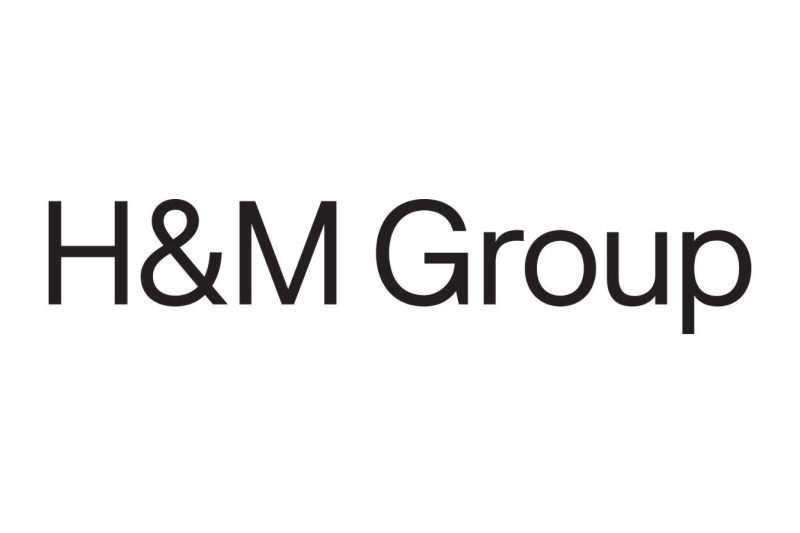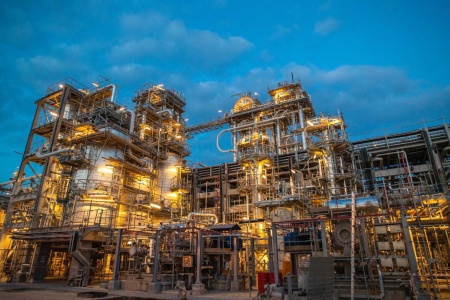
Net-Zero Jargon Buster - a guide to common terms
15th Oct 2024
To help navigate the tricky terrain of net-zero, we have compiled a jargon buster of the most common terms used in net-zero discussions and in relation to our Corporate Net-Zero Standard.
‘Net-zero by 2050’ is a call-to-arms for many countries and companies worldwide to ramp up their climate ambition and take urgent action. With 93% of the global economy by GDP (PPP) committed to reaching net-zero, a common, robust framework that clearly defines net-zero and how to get there is more important than ever.
That’s why the Science Based Targets initiative (SBTi) released the Corporate Net-Zero Standard in 2021, and is currently revising it to align with the latest climate science. The Standard has already enabled over 1,200 companies as of October 2024 to set SBTi-validated net-zero targets, with another 2,400+ committed to do the same in the near future.
However, while thousands of companies are taking action using the SBTi’s Corporate Net-Zero Standard, it remains the case that the language used throughout the climate world is not always clear or consistent. Some frequently-used terms can be confusing, interchangeable and even misleading. To help navigate this tricky terrain, we have compiled a jargon buster of the most common net-zero terms and the definitions used in the Corporate Net-Zero Standard.
1.5°C of global heating is a common benchmark used to indicate a climate change tipping point. The Intergovernmental Panel on Climate Change has stressed that surpassing 1.5°C of heating compared to pre-industrial averages (before the mid-18th century) will create permanent consequences for all life on Earth.
2023 was 1.18°C hotter than the 20th century average, and current policies place us on track for 2.9°C of warming this century according to the UNDP’s Emissions Gap Report 2023.
When used in reference to companies, abatement means measures that companies take to prevent, reduce or eliminate sources of GHG emissions within their value chain (the full range of activities that businesses undertake to bring a product or service from conception to the customer). While abatement is often used interchangeably with decarbonization, they are not the same. Abatement includes all GHGs, while decarbonization may only refer to carbon dioxide or carbon dioxide equivalent (CO2e).
Some examples of abatement include:
- Phasing out activities that produce emissions.
- Taking measures to reduce the intensity and/or extent of impacts that cannot be completely avoided (e.g., increase fuel or resource efficiency).
- Natural removal of GHGs that occur through land use and are accounted for in SBTi FLAG (forest, land and agriculture) targets.
The SBTi Corporate Net-Zero Standard V1.2 recommends that companies invest in beyond value chain mitigation (BVCM) in addition to deep value chain emissions cuts. BVCM includes climate mitigation action or investments that fall outside a company’s value chain, including activities that avoid or reduce GHG emissions, or remove and store GHGs from the atmosphere. Examples include purchasing high-quality carbon credits and providing direct finance to climate mitigation.
The SBTi’s Above and Beyond report on BVCM provides suggestions to support companies in the design and implementation of BVCM strategies to accelerate progress towards global net-zero.
BVCM activities are not offsetting. The Corporate Net-Zero Standard V1.2 makes it clear that climate mitigation beyond a company’s value chain must be on top of, not instead of, a company’s own deep emission cuts (see Scenario 5 in the SBTi’s Aligning Corporate Value Chains to Global Climate Goals for more information on the potential use of carbon credits in support of BVCM).
Although often used interchangeably with ‘net-zero’ by others, the SBTi does not use the term carbon neutral. Carbon neutral is generally used when counting the use of carbon offsets (i.e. investing in projects that remove carbon from the atmosphere to counterbalance some or all GHG emissions). In other words, carbon neutral does not necessarily mean that direct emission reductions have taken place. Carbon neutrality claims also do not necessarily include GHGs other than carbon dioxide. The SBTi does not validate carbon neutrality claims and does not permit the use of offsetting as it does not align with the action needed to ensure global heating is limited to 1.5°C.
The Greenhouse Gas (GHG) Protocol is a comprehensive global standardized framework to help measure and manage GHG emissions from private and public sector operations, value chains, and mitigation actions.
The SBTi’s criteria and recommendations, including the Corporate Net-Zero Standard, rely on the accounting frameworks developed by the GHG Protocol.
GHGs are gases which absorb and re-emit infrared radiation. They absorb sunlight (i.e. infrared radiation) and trap it within the earth’s atmosphere, causing a heating effect also called the greenhouse effect. The Kyoto Protocol, which is an international climate agreement adopted in 1997, recognizes seven GHGs as the direct cause of climate change:
- Carbon dioxide (CO2 - by far the biggest contributor to climate change)
- Methane (CH4)
- Nitrous oxide (N2O)
- Hydrofluorocarbons (HFCs)
- Perfluorocarbons (PFCs)
- Sulfur hexafluoride (SF6)
- Nitrogen trifluoride (NF3)
The IPCC is the United Nations body for assessing the science related to climate change. Created in 1988, the IPCC releases reports and technical publications for governments around the world to use when developing climate policies and programs. All SBTi-validated targets and guidance are built on research from the IPCC.
Long-term science-based targets show businesses the emissions reductions that climate science deems necessary to reach net-zero no later than 2050 and keep global heating under 1.5°C.
Under the SBTi’s Corporate Net-Zero Standard, most companies are required to reduce emissions by at least 90% before 2050 to reach net-zero.
Mitigation is a human intervention to reduce emissions or enhance natural systems that capture and store GHGs (IPCC, 2018). Mitigation varies greatly depending on the targeted activity. For a delivery company, mitigation might look like using electric vans instead of gas-powered trucks. For a steel producer, mitigation might include building new low-carbon electric arc furnaces. Mitigation for farmers could involve using cover crops to increase the amount of carbon absorbed by their fields.
The SBTi mitigation hierarchy lies at the heart of the Corporate Net-Zero Standard. It consists of three steps in the following order of priority:
- Avoid creating value chain emissions from the outset (e.g., use renewable power instead of fossil fuels).
- Reduce the intensity and/or extent of GHG impacts in the value chain that cannot be completely avoided (e.g., efficiency projects to reduce electricity usage of existing equipment).
- Take responsibility for value chain emissions that continue to be released into the atmosphere by driving climate mitigation outside of the company’s value chain (BVCM). It is expected that over time, and by 2050 at the latest, unabated emissions are counterbalanced by permanent removal and storage of carbon from the atmosphere (neutralization of residual emissions).
Net-zero emissions are achieved when human-caused GHG emissions are balanced by removing the same quantity of emissions from the atmosphere over a specified period of time (IPCC, 2018). Net-zero GHG emissions must be achieved at the global level to stabilize temperature increase at 1.5°C (see earlier definition).
The SBTi’s Corporate Net-Zero Standard outlines how much and how quickly companies need to reduce GHG emissions in order to achieve net-zero no later than 2050. For most companies, net-zero means reducing GHG emissions by at least 90% and neutralizing (see: neutralization below) any residual GHG emissions on an ongoing basis.
SBTi-validated net-zero targets include both near- and long-term science-based targets. They are GHG mitigation targets that imply:
- Reducing scope 1, 2 and 3 emissions to zero or a residual level as defined within eligible pathways
- Permanently neutralizing (see: neutralization below) any residual emissions at the net-zero target year and any GHG emissions released into the atmosphere thereafter
The Corporate Net-Zero Standard V1.2 also recommends companies invest in beyond value chain mitigation (BVCM) in addition to the required emissions reductions. See BVCM definition for more information.
Neutralization refers to measures that companies take to counterbalance the climate impact of GHG emissions which are impossible to avoid after their net-zero target date. Neutralization involves permanent removal and storage methods of CO2 from the atmosphere.
In order to achieve net-zero, once companies have achieved their long-term target, they must neutralize any residual emissions (usually less than 10% of base year emissions) using permanent carbon removals and storage.
Scope 3 emissions are indirect GHG emissions (other than those covered in scope 2) that occur in the value chain of the reporting company.
These can be up or down the value chain. For example, transport and distribution, or the use and disposal of goods or services after they reach the consumer. These activities might include extraction and production of purchased materials; transportation of purchased fuels; and use of sold products and services.
Because scope 3 emissions encompass those across the entire value chain, “scope 3 emissions” and “value chain emissions” can be used interchangeably.
In the context of science-based targets, a target year refers to the year that a company commits to achieve the emissions reduction prescribed in their target. Near-term target years must be between 5 and 10 years from the date the target is submitted to the SBTi. Long-term target dates must be 2050 or earlier.
A value chain is the full range of activities that businesses undertake to bring a product or service from conception to the customer. Therefore, value chains encompass activities from both the upstream (inputs into a product or service) and downstream (outputs from a product or service) associated with the operations of the reporting company.
A value chain is different from a supply chain because a supply chain only refers to upstream activities/emissions (i.e. from suppliers). Value chain emissions and scope 3 emissions can be used interchangeably.
A common understanding of the language we use to describe climate action is critical to achieving global net-zero goals. For more information on common terms used by the SBTi, check out our glossary. And for the latest developments on our Corporate Net-Zero Standard, visit our website, sign up for our newsletter and follow us on LinkedIn and X.
This blog was updated in October 2024.



